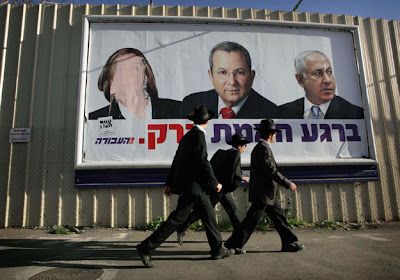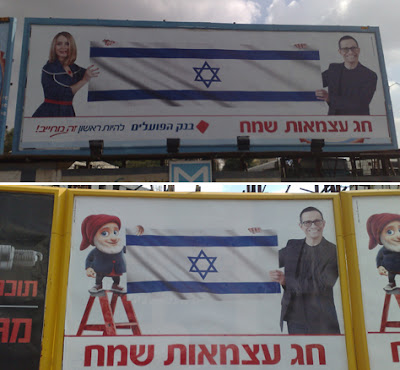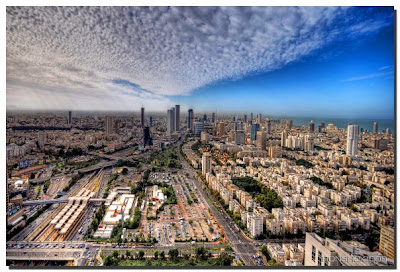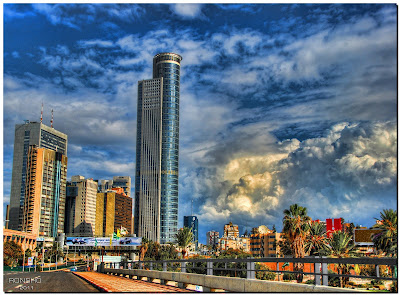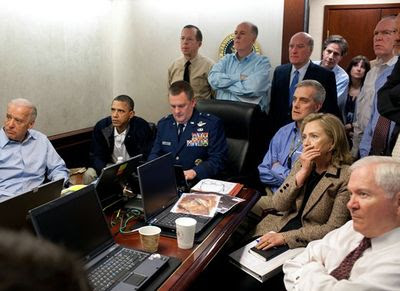The whole media storm over the doctored photo of the National Security Team in the Situation Room (being briefed with the president and vice president on the Osama Bin Laden raid) has raised many questions and additional controversy.
Yesterday, I took part in an ad hoc Facebook forum moderated by journalist Steven I. Weiss that centered on the ethics of altering photographs. The interesting discussion touched on several aspects of the story including whether it is ever ethical to alter a photo. In my opinion, this is a “gut decision.” That is to say, touching up a photo to improve the lighting or to remove a few blemishes from a person’s face is acceptable. However, airbrushing an ex-girlfriend out of a group photo might feel good, but it alters the record of reality.
One of the most iconic photos of the 20th century is from the Kent State shootings. The photo was altered by removing a post that otherwise would have seemed to be emanating from the screaming woman’s head. This didn’t change the historical record of the event.
In conversations about the two Haredi (ultra-Orthodox) newspapers that airbrushed Hillary Clinton and Audrey Tomason from the now famous photo, I tried to shift the focus from the Jewish religious issues of modesty to the question of photographic integrity. Many people thought I was intentionally throwing mud at the ultra-right wing of the Jewish world, when in fact I was drawing attention to the problem of doctored photographs. The two examples I’ve raised have been the doctored photos of Oprah Winfrey on the cover TV Guide and Katie Couric’s magical weight loss thanks to Photoshop. (The photo of Oprah is actually her face on Ann Margaret’s 1979 body.) Both of these photos are misleading to the public.


I fully believe that these ultra-Orthodox newspapers have the right to determine which photographs they use to accompany their articles. I disagree, of course, that photos of women and girls are too immodest to be shown, but these papers do have this right. However, altering photos as they often do is unethical. And it’s not only a policy on photographs. In 2008, when Tzipi Livni was close to becoming Israel’s first female prime minister since Golda Meir, ultra-Orthodox newspapers not only refused to print photos of her, they also wouldn’t print her full name. “We might write ‘Mrs. T. Livni’ or just ‘Mrs. Livni,’ but the name Tzipi is too familiar. It is not acceptable to address a woman using her first name, especially when she goes by a nickname,” a senior editor at Hamodia said.
For many Haredi Jews these newspapers are the only form of news they receive. They don’t have televisions in their homes and Internet use is forbidden. To these communities, the papers become the historical record. The iconic of photo in the Situation Room for the Bin Laden briefing will be around forever in millions of formats. However, photos that are only printed in these Haredi newspapers really will become historical documents and records of past events. Doctoring them will forever change how future generations will recall their community’s history and this misrepresentation of reality is deceitful.
This is a delicate issue and it’s important to know the facts. There have been many examples of misinformation surrounding this story. I’ve received irate phone calls from people who actually think that I was the one who removed Hillary Clinton from the photo. The Jewish Week, where I originally wrote about this, has been accused of being the newspaper that doctored the photo. Some people have even accused me of being a self-hating Jew (I’m not) for breaking the story (I didn’t) simply to criticize the Orthodox. While I don’t agree with the way women are perceived or treated in the ultra-Orthodox Jewish world, I don’t occupy my time criticizing them. However, I also don’t believe that I must remain silent about my feelings based on the principle that any critique of other Jews is damaging to the entire faith.
Here are some other examples of how the ultra-Orthodox have doctored images based on their interpretation of the laws of modesty, including replacing a woman with a gnome in an Independence Day billboard recently. As always, leave a comment to join me in this interesting conversation.
(c) Rabbi Jason Miller | http://blog.rabbijason.com | Twitter: @RabbiJason | facebook.com/rabbijasonmiller



